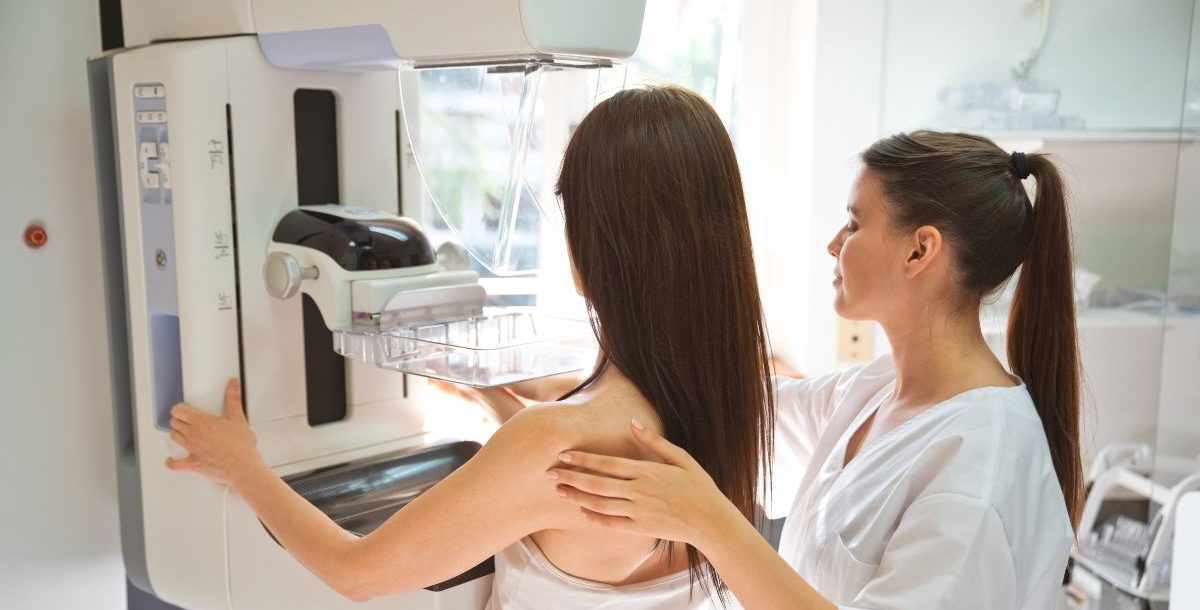Are you due for your first mammogram? If so, you might be wondering what it will be like. Understanding what to expect during your first mammogram can help alleviate anxiety and ensure a smoother experience.
We are happy to provide you with comprehensive information on the mammogram process, so you can approach your upcoming appointment with confidence.
What is a mammogram?
A mammogram is a specialized breast imaging technique that uses low-dose X-rays to create images of the breast tissue. It plays a crucial role in cancer screening, allowing for the early detection of abnormalities that could indicate breast cancer.
For many women, the first mammogram occurs around the age of 40, but some may need to start earlier if they have a family history of breast cancer or other risk factors.
How can I prepare for my first mammogram?
Like many health screenings, preparation can help make your experience more comfortable.
Here are some essential tips for your first mammogram:
- Schedule your mammogram strategically: Choose a time when your breasts are less likely to be tender, usually a week after your menstrual period.
- Wear something comfortable: Opt for a two-piece outfit. You will need to remove your top for the procedure, so wearing a top and a bottom can make the process easier.
- Avoid certain products: On the day of your appointment, avoid wearing deodorant, perfume or lotions. These products can interfere with the imaging results and might require additional imaging.
What is the process of a mammogram?
Once you arrive at the imaging center, you’ll be greeted by a mammography technologist, who will guide you through the procedure.
Here’s what to expect during it:
- Positioning: The technologist will ask you to stand in front of the mammography machine. You’ll need to position your breasts on the imaging plate. This might feel a bit uncomfortable, but it’s essential for obtaining good-quality images.
- Compression: A plate will compress your breast from side to side. This compression is necessary to spread out the breast tissue, making it easier to identify any potential issues. The pressure usually lasts only a few seconds and while it might be uncomfortable, it shouldn’t be painful.
- Imaging: The technologist will take multiple images from different angles. You may be asked to hold your breath briefly during this process to ensure clarity in the images.
- Duration: The entire procedure typically takes about 15 to 30 minutes. Afterward, you can get dressed and return to your daily activities.
What can I expect after my first mammogram?
After your mammogram, the images will be reviewed by a radiologist. They will look for any signs of abnormalities or changes in your breast tissue. Most women receive their results within a week. In some cases, you may be called back for additional imaging or tests. This doesn’t necessarily mean something is wrong – it could be due to unclear images or the need for further evaluation.
Additional common questions about first mammograms
- At what age should a woman have her first mammogram? The general recommendation is that women start having screening mammograms at age 40, but those at higher risk may need to begin earlier. Consult with your primary care provider to determine the best timing for you.
- Why would I be called back after my first mammogram? A callback can occur for various reasons, including unclear images or a finding that needs further investigation. Remember, it’s not uncommon and doesn’t always mean there is a problem.
- Is it bad to get a mammogram too early? Getting a mammogram before the recommended age can lead to unnecessary anxiety and additional procedures if the results are unclear. It’s best to follow the guidelines and consult your doctor based on your personal risk factors.
Your first mammogram can feel daunting, but knowing what to expect can make the experience much more manageable. And remember, proactive health measures are essential for maintaining your overall well-being.
Learn about the mammogram services as well as the primary care services we provide at Bon Secours.





